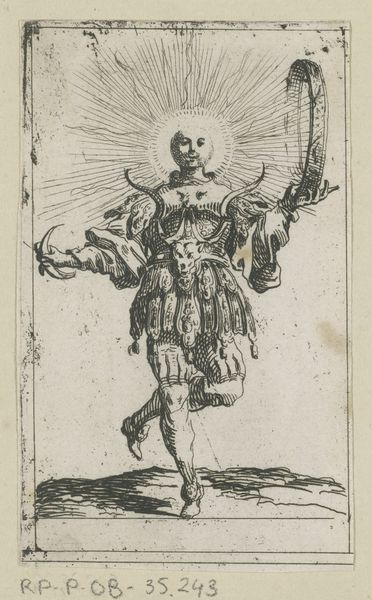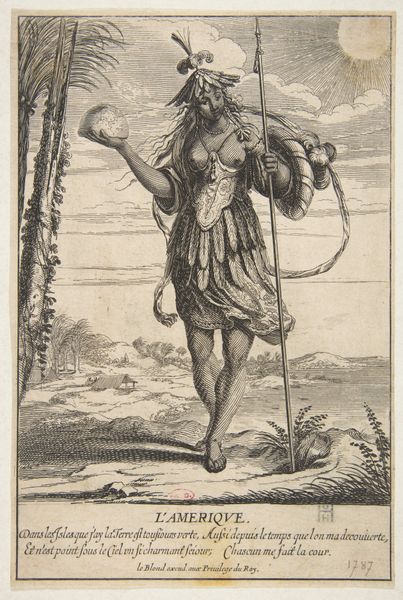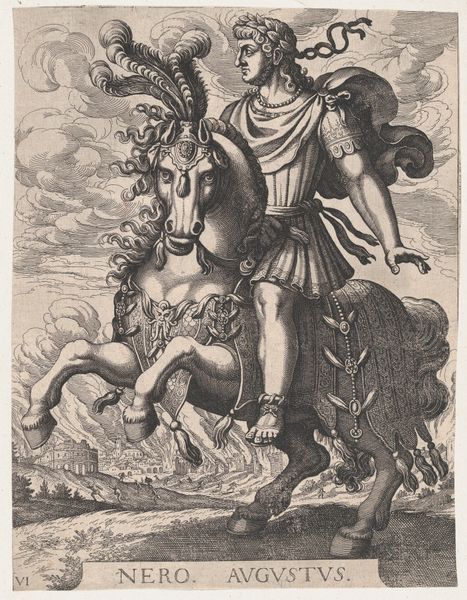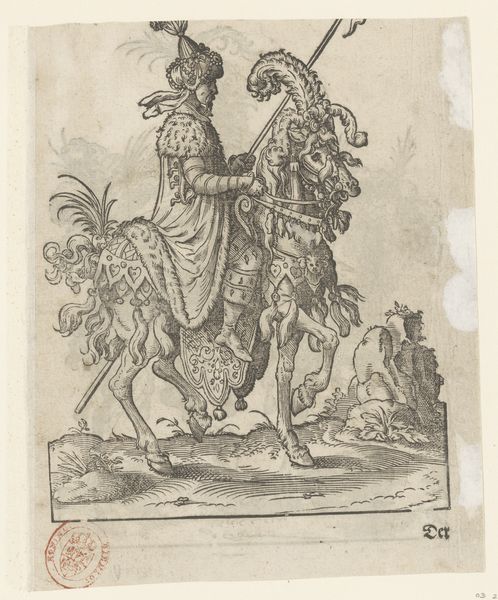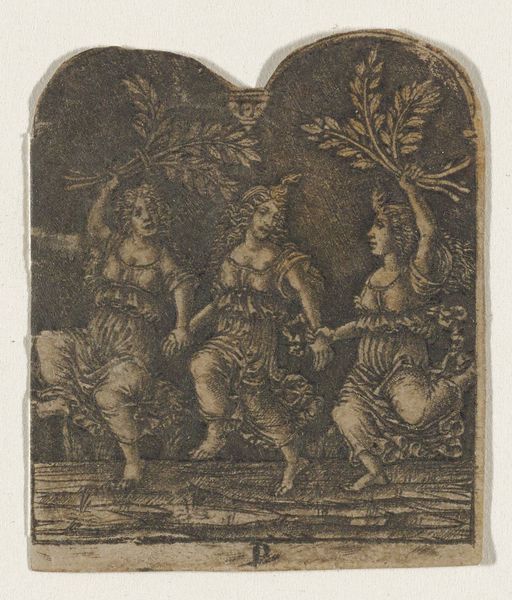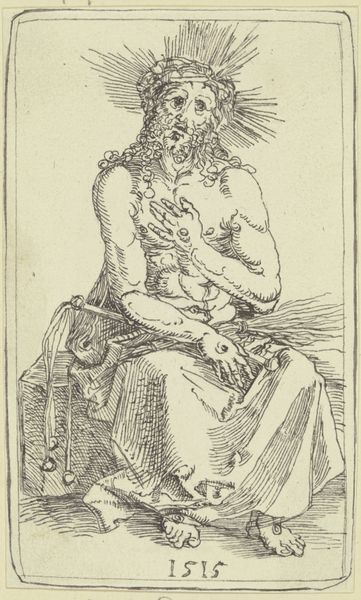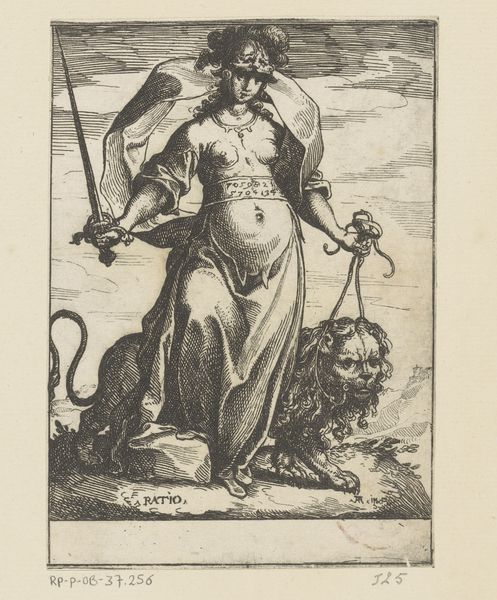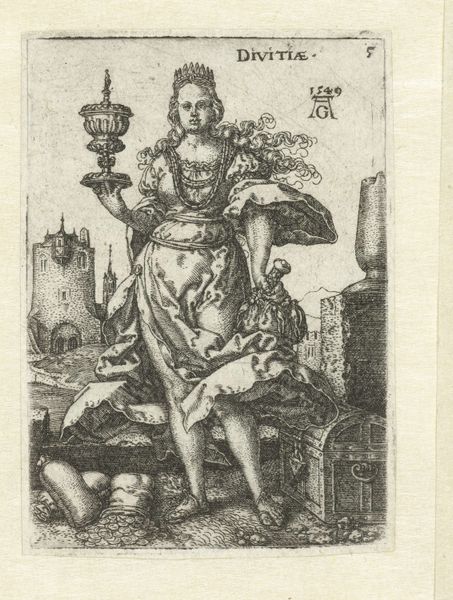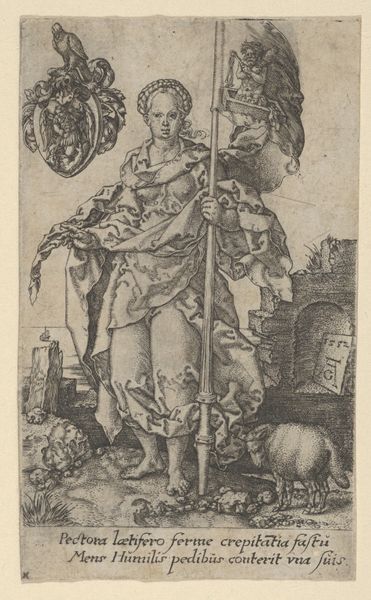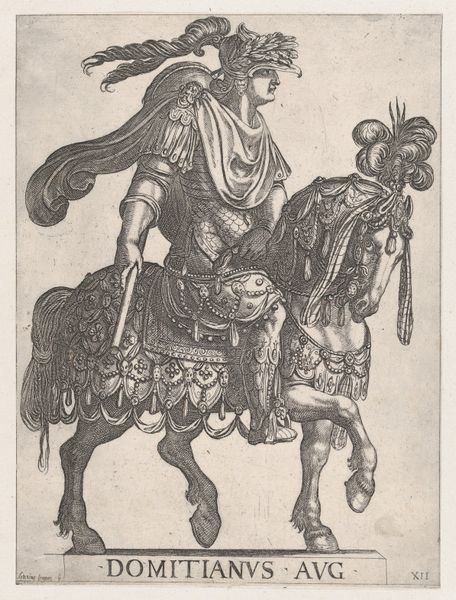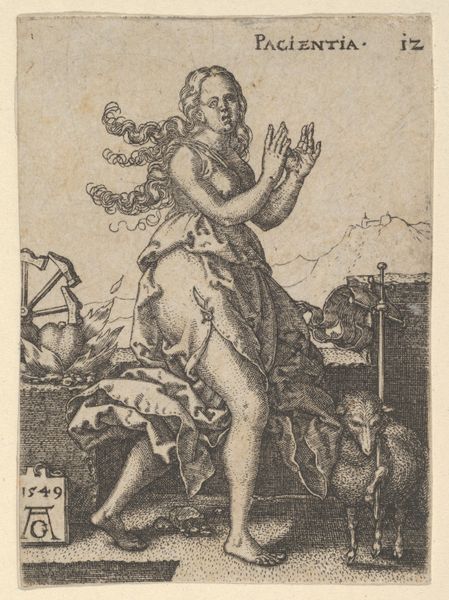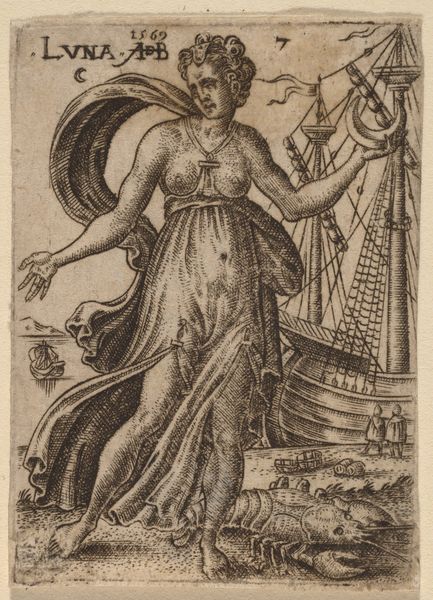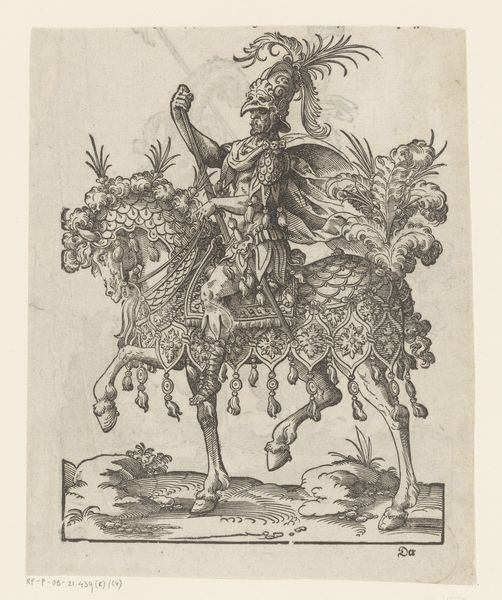
Amerique, from the playing cards (for quartets) "Costumes des Peuples Étrangers" 18th century
0:00
0:00
drawing, coloured-pencil, print
#
portrait
#
drawing
#
coloured-pencil
#
narrative-art
# print
#
indigenism
#
figuration
#
coloured pencil
#
ancient-mediterranean
Dimensions: 3 3/16 × 2 1/16 in. (8.1 × 5.3 cm)
Copyright: Public Domain
This playing card, titled "Amerique," was made in France during the 17th century, part of a quartet set illustrating "Costumes des Peuples Étrangers," or costumes of foreign peoples. It offers a glimpse into how Europeans perceived the Americas and its inhabitants. The image depicts a stylized, Indigenous figure adorned with feathers and holding a bow and arrows. Note how the artist combines some elements based on reality with pure fantasy: in the foreground a beaver and some grapes sit next to a pineapple, a visual shorthand for the exotic "new world." Made during a period of intense colonial expansion, the card reflects both fascination with and a limited understanding of American cultures. The card is interesting not only as an example of period printing but as a historical document, reflecting the cultural biases and stereotypes prevalent in Europe during that time. The image, through its visual codes and cultural references, reveals a complex interplay between the reality of cultural exchange and the politics of representation. As historians, we can use sources like travelogues, maps, and other visual materials to reconstruct the historical context and better understand the conditions that shaped this image.
Comments
No comments
Be the first to comment and join the conversation on the ultimate creative platform.
